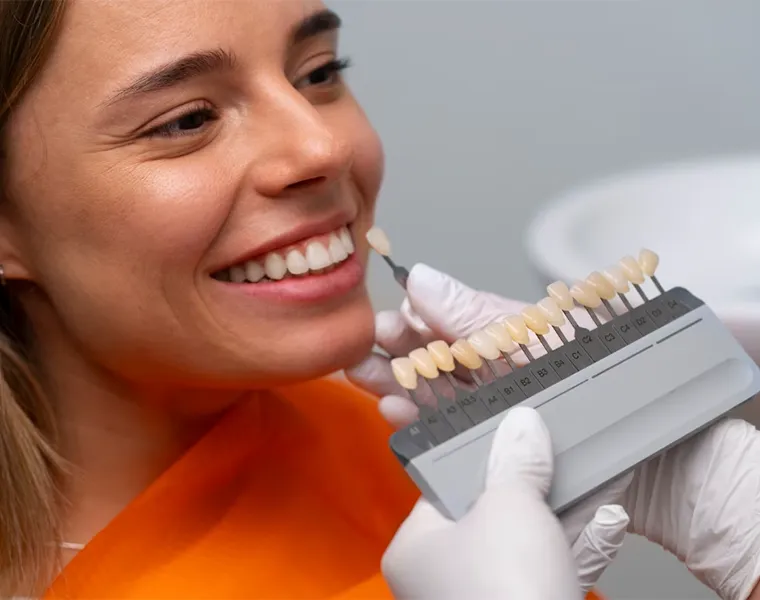Dental crowns effectively resolve many dental problems. With the advancement of technology, there have been new developments in the field of oral health and aesthetics. Dental crowning is a method that emerged with these technological advancements, offering solutions for both aesthetic and functional reasons.
Dental crowns can close gaps between teeth, restructure cracks in teeth, and correct color discrepancies. This new generation method provides an aesthetic appearance, preserves the natural color of the tooth, and achieves long-lasting results. There are multiple types of dental crowns to meet different needs, which will be discussed later in the article.
What is a Dental Crown?
A dental crown is an aesthetic and functional treatment method used in dentistry. This application usually involves applying a special material to the front surface of the teeth to improve their appearance. This method, applied for both aesthetic and functional reasons, is quite popular. Dental crowns restore the color and shape of teeth, improving dental health and function.
With advancing technology, different materials have started to be used for dental crowns, each with unique features. The choice of crown depends on the individual’s expectations and needs.
Types of Dental Crowns
Dental crowns are chosen for aesthetic purposes or to correct dental damages. There are different types of dental crowns with various functions and features. The type of dental crown to be used is determined based on the dentist’s evaluation of the patient’s needs and the condition of the tooth/teeth.
The most preferred types of dental crowns:
Zirconium Crowns
Zirconium crowns are known for their durability and longevity, making them one of the most preferred dental crown materials. They have several advantages. Zirconium, derived from ceramics, is in demand due to its similarity to natural tooth color. This similarity also gives zirconium crowns an aesthetic advantage.
Porcelain Crowns
Porcelain dental crowns are more prominent for their aesthetic features. Their high similarity to natural tooth color distinguishes them from other materials. Their fine design makes these crowns visually more appealing, offering high light transmittance and a sense of naturalness. Porcelain crowns dazzle with their aesthetic appearance and are highly durable, providing maximum benefit for the user.
The application process of porcelain crowns is similar to other crowns. First, measurements of the teeth are taken and temporary crowns are fitted. Then, the porcelain dental crowns are produced, and once ready, they are permanently fitted to the individual.

- Laminate CrownsLaminate dental crowns are used to correct color defects, stains, cracks, shape deformities, and gaps in the teeth. They can also be chosen to improve the length and form of the teeth. Laminate crowns are attached as a thin layer to the front surface of the teeth. They contain carefully selected materials for color, form, and light transmittance to enhance the natural appearance of the teeth. Thus, patients usually achieve a whiter, more uniform, and attractive smile.
How is a Dental Crown Applied?
Dental crown procedures are easy and painless for the patient. The tooth surface is prepared by the dentist, and the selected material is used to fill the gap. Then, the material is hardened using a special light or chemical. This process can help achieve a more aesthetic smile and correct gaps or cracks between teeth.
The lifespan of dental crowns is a matter of great interest. The longevity of dental crowns depends on oral health conditions and how the crowned teeth and oral tissues adapt over the years. Regular oral hygiene and dental check-ups after the crowning will extend the use time.
You can contact us through our communication addresses to learn about the pricing of dental crown applications by LibreDent, get more detailed information about the treatments, and make an appointment quickly.











